Ten Lessons from the ÖTILLÖ Swimrun Isles of Scilly 2016

The ÖTILLÖ is a gruelling swim-run race in which competitors race over land and water. Adventure journalist Tarquin Cooper gives a first-hand account of the lessons learnt from running in wetsuits and swimming in trainers.It’s the adventure sport that’s exploding in popularity. Forget triathlons, mud runs and so-called Obstacle Course Racing (OCR). The most highly prized t-shirt to get these days is to complete an ÖTILLÖ race. Started as a bet over ten years ago in Sweden, the ÖTILLÖ is a gruelling swim-run race in which competitors race over land and water. And unlike your regular triathlon, competitors race in pairs and switch disciplines multiple times – and therein lies the adventure – they run in wetsuits and swim in trainers and journey in and out of the water throughout the course. The rules also permit the use of external aids, from using hand-paddles to towing systems. But it’s more than just a physical challenge. “ÖTILLÖ is nothing without your partner,” says race director Michael Lemmel. It’s an emotional experience to be shared and that’s the beauty of the sport.”Besides the signature race in Sweden there are now races across Europe. The latest to premier was the UK’s first edition, ÖTILLÖ Isles of Scilly.The Outdoor Journal’s Tarquin Cooper was there. Here are ten things he learnt from taking part.
1. It's a long swim
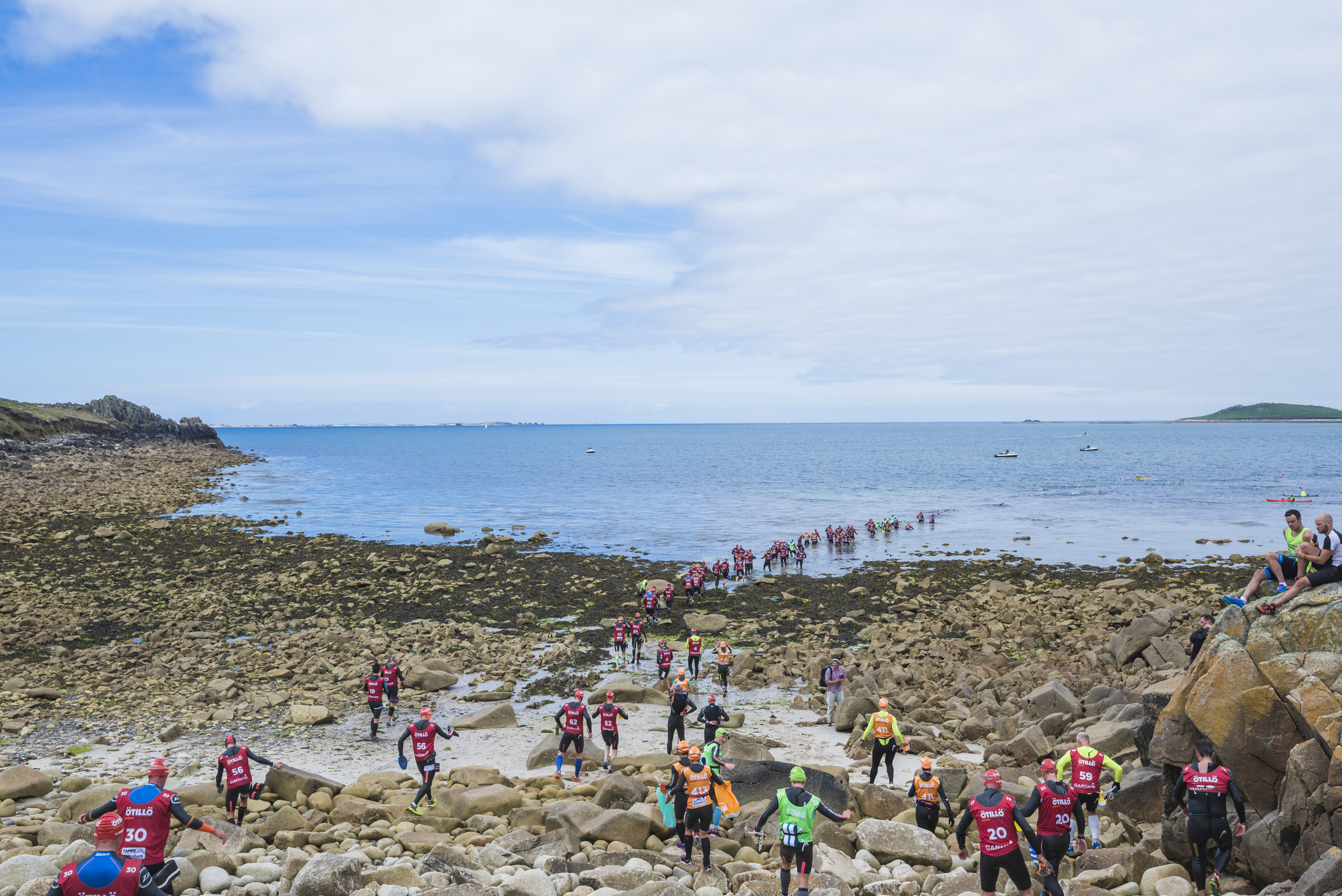
ÖTILLÖ begins and ends with a long swim. The first, above, is 2km long and is designed as a deliberate baptism into the race, a reminder to racers of what’s involved, and what lies ahead, in case anyone has made the mistake of underestimating how difficult it will be. And there will be a few of those! The final swim is a 2.4km test of humour against strong currents in water that’s just 14ºC.
2. Buildings aren’t the only things to get ruined around here
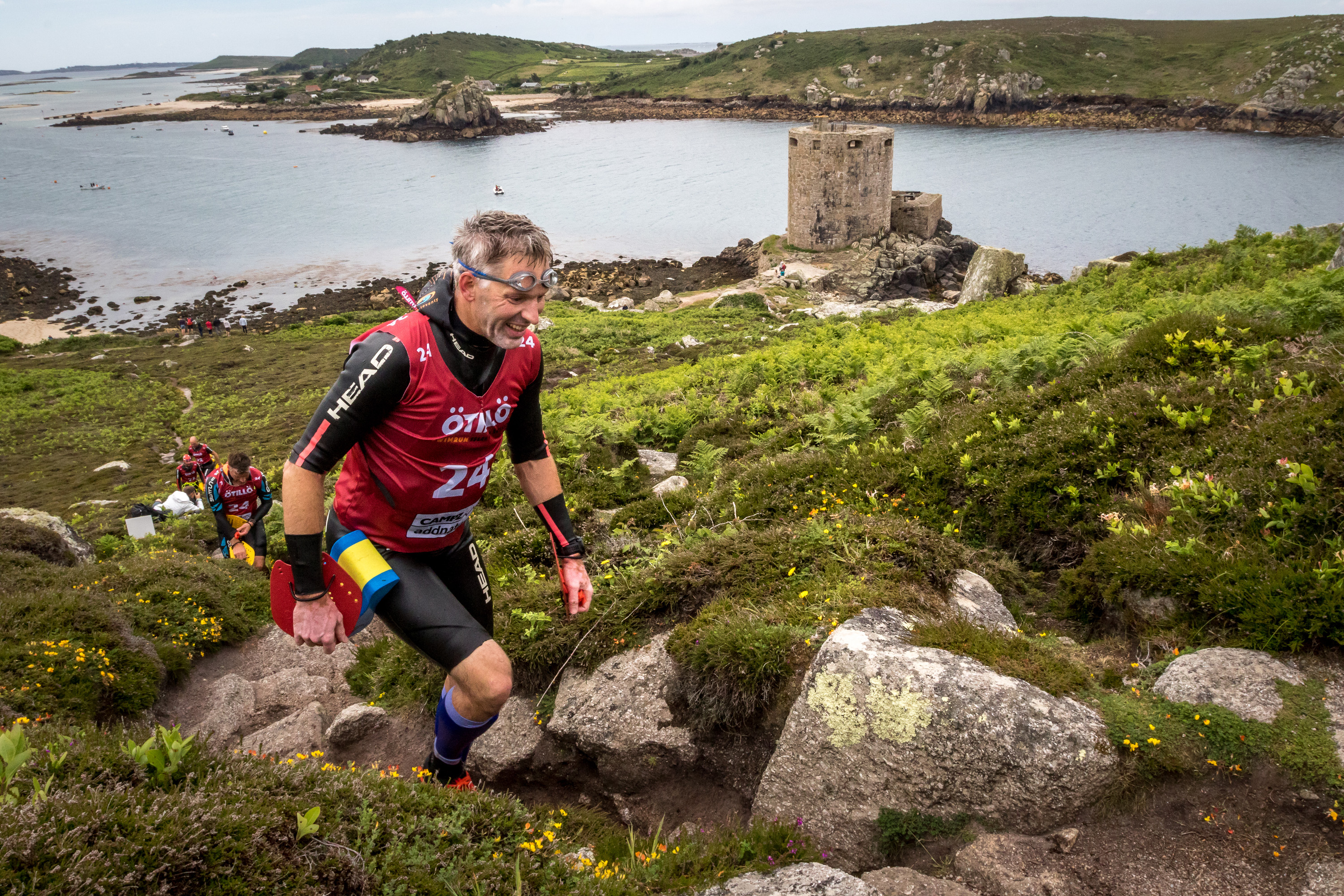
With 239 monuments, the Isles of Scilly officially has a greater density of historical sites than anywhere else on Britain. Racers pass dozens of buildings and forts battered by the elements, which is rather ironic really as after racing for several hours, you’ll feel pretty ruined yourself.
3. There’s a lot of swimming
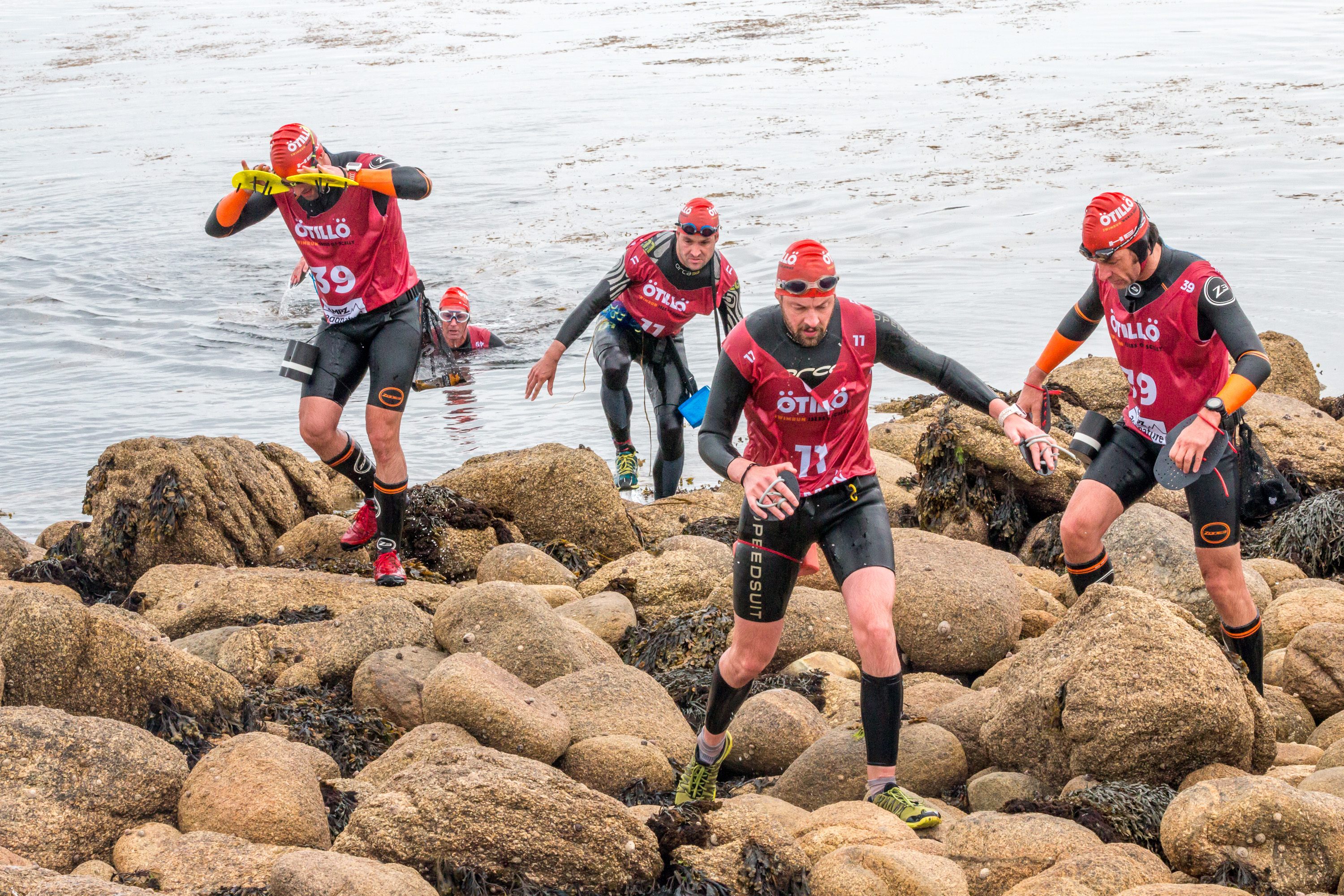
Did we mention the swimming? There’s actually a lot of it – 7.5km in total. If you’re not a triathlete, competitive swimmer or don’t swim regularly, this is a lot! Expect your shoulders and triceps to be extremely sore by the end. Most competitors use hand paddles but a lot of practise is required to get the technique right. Many athletes also strap a foam ‘pull buoy’ between their legs to ensure their legs don’t drag in the water like a ship’s anchor.
4. Tool up in the hardware store
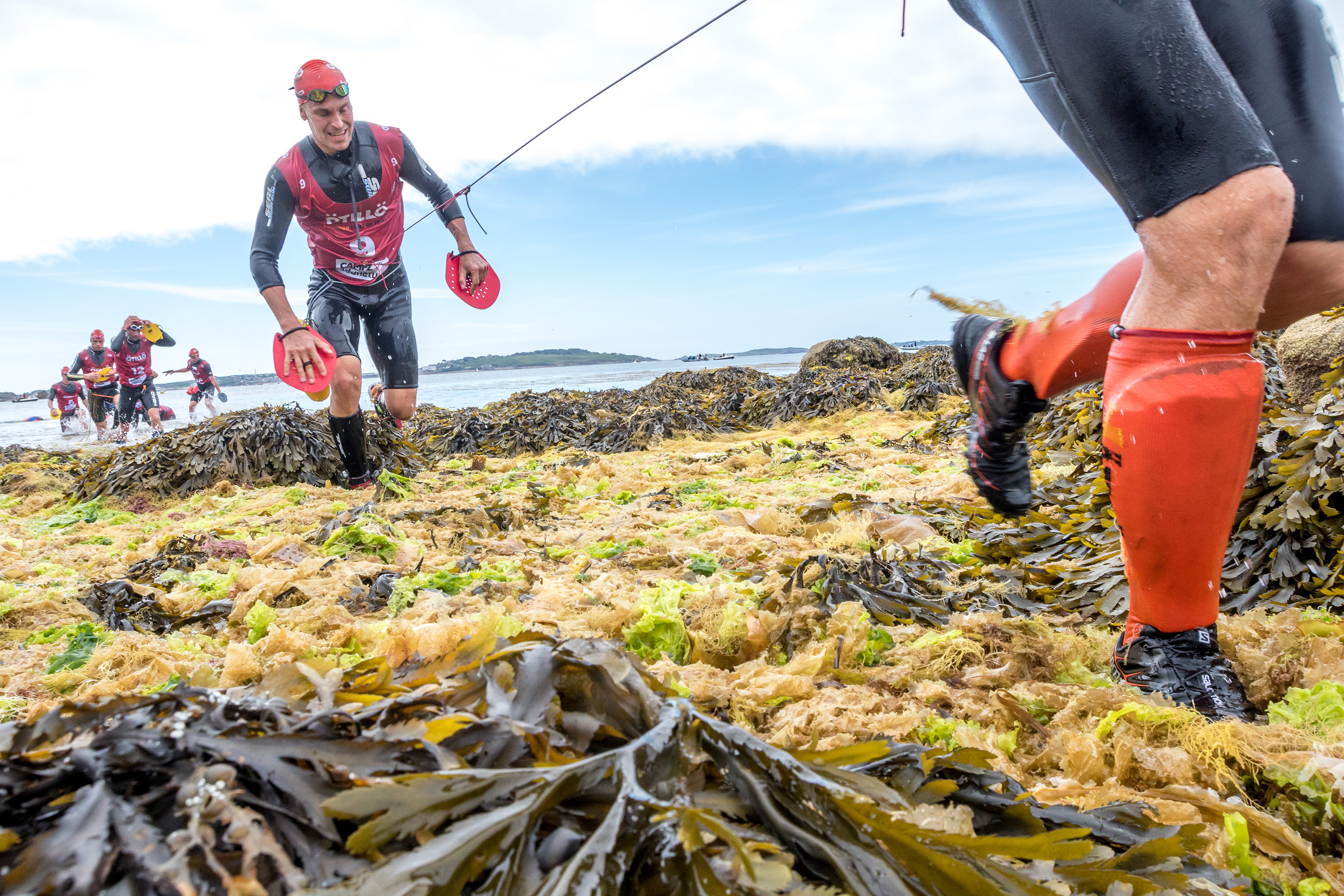
Many things define an ‘adventure race’ but one of them is the flexibility given to competitors to work out their own solutions for going the distance. See that guy’s leg? Those are not footballer’s shin pads but (most likely) strips of cut-up roll mat to give buoyancy in the water. That tow rope? That’s a strip of bungee chord to help the weaker swimmer in the water. Most competitors also use hand paddles for faster propulsion.
5. Watch the traffic
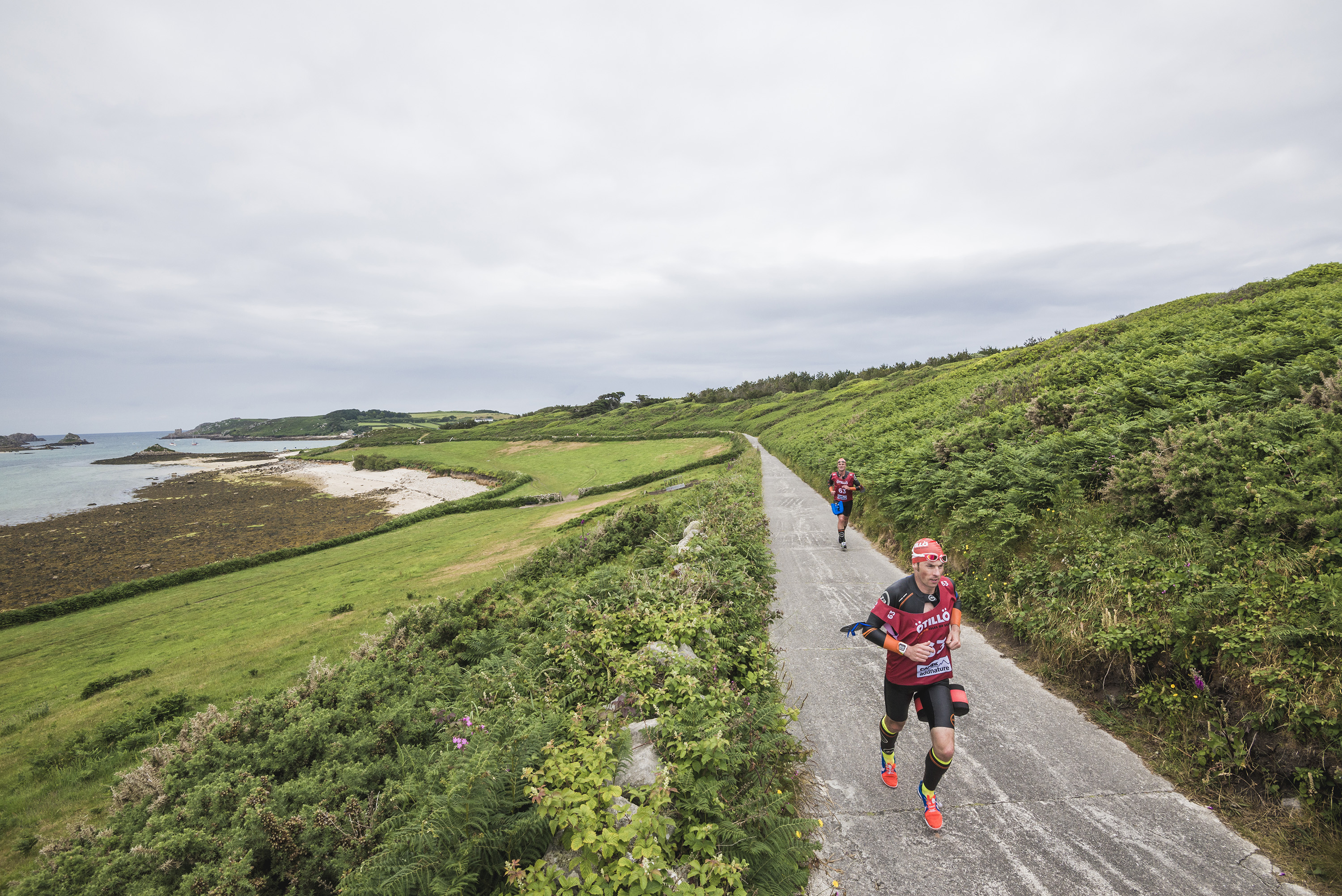
Most of the 30km of running is on trails. “It’s some of the most beautiful trail running I’ve done,” said race director Michael Lemmel. He wasn’t exaggerating. There are some sections on asphalt, like this, but even they’re pretty wild and special. During the briefing Lemmel was adamant that the dropping of litter would not be tolerated. At all. Period. (It was a message racers heeded: just one gel was picked up by the race sweepers – and it had not been used.)
6. Sand is soft – but not when it’s in your shoe
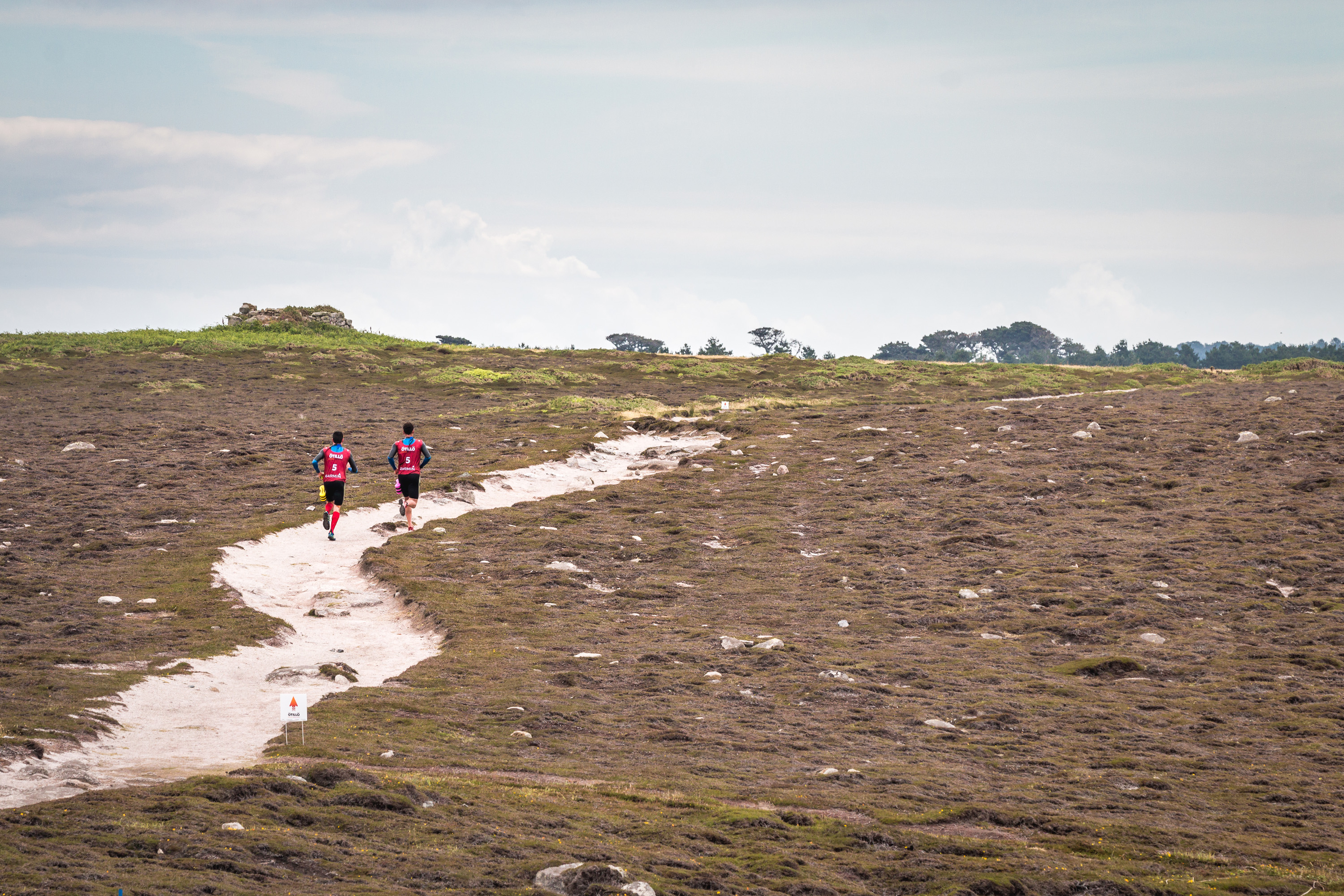
It was here that I had to stop to empty the sand from my trainers – a large clump had built up and was putting painful pressure on my toes. Lemmel had some advice for when these moment happen. “You will get blisters,” he warned. “Suck it up.” I failed. Speaking of pain, one of the race’s less endearing features is the “ÖTILLÖ love bite” – a painful chafing on the neck caused by a rubbing wetsuit.
7. Wetsuits aren’t made for running
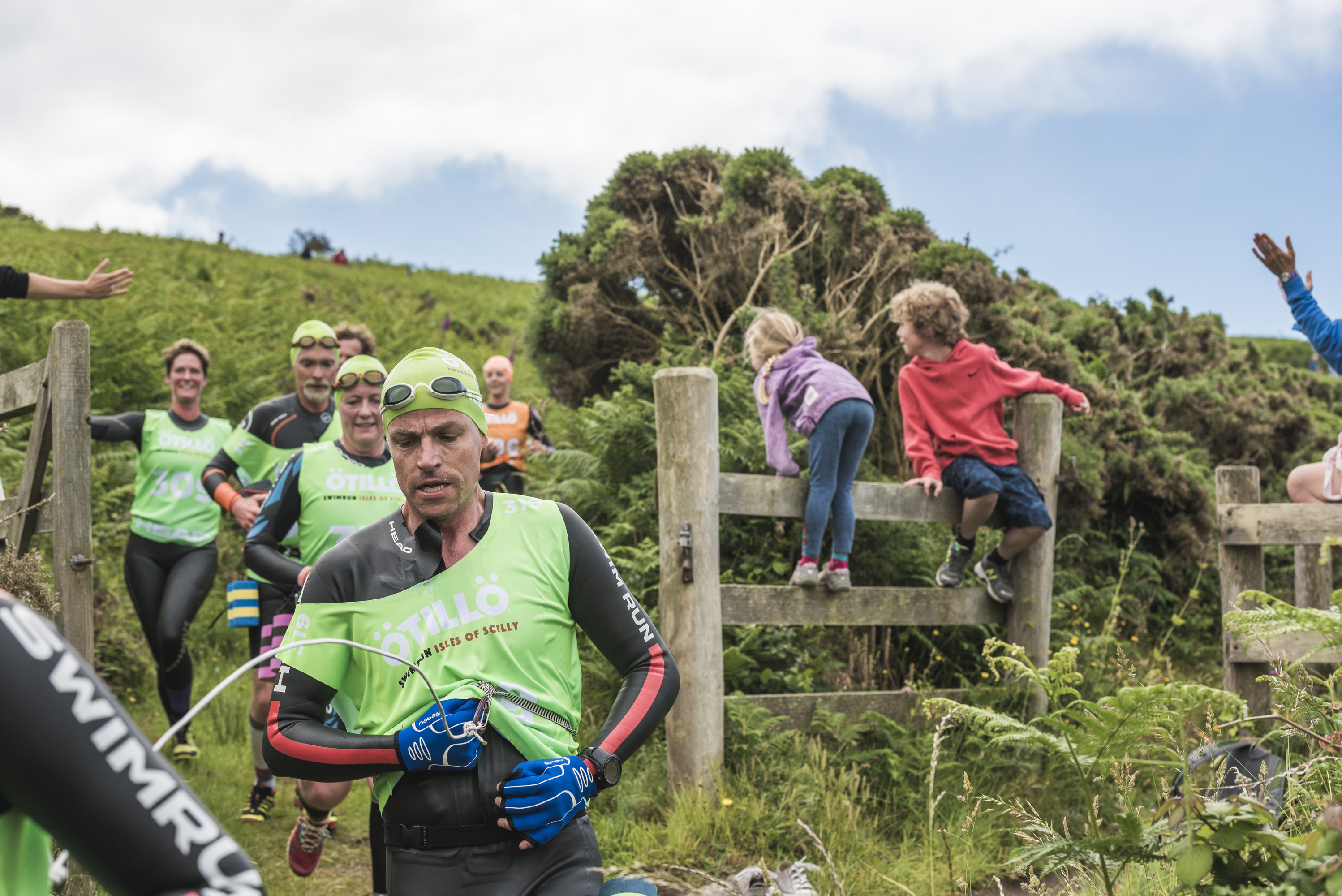
This is me, near the start. I’m wearing a full length wetsuit because the water’s cold and I don’t want to get hypothermia. Mine, made by Head, is designed for swim-run and has a zip down the front to vent. But still, they are not ideal for running. That’s part of the challenge of swim-run. Most competitors cut them off at the knee and elbow. I did not – and suffered as a result. During a 7k running stage my pace dropped, my heart rate increased and I thought I was showing early signs of heatstroke.I have never wanted to dive into the cold sea so badly. An hour later, I had never wanted to get out of freezing water so badly. Even with the full length wetsuit, I’d lost the feeling in my left hand and my feet were blocks of ice. It took two kilometers of running to thaw them out.
8. Swimming trainers?
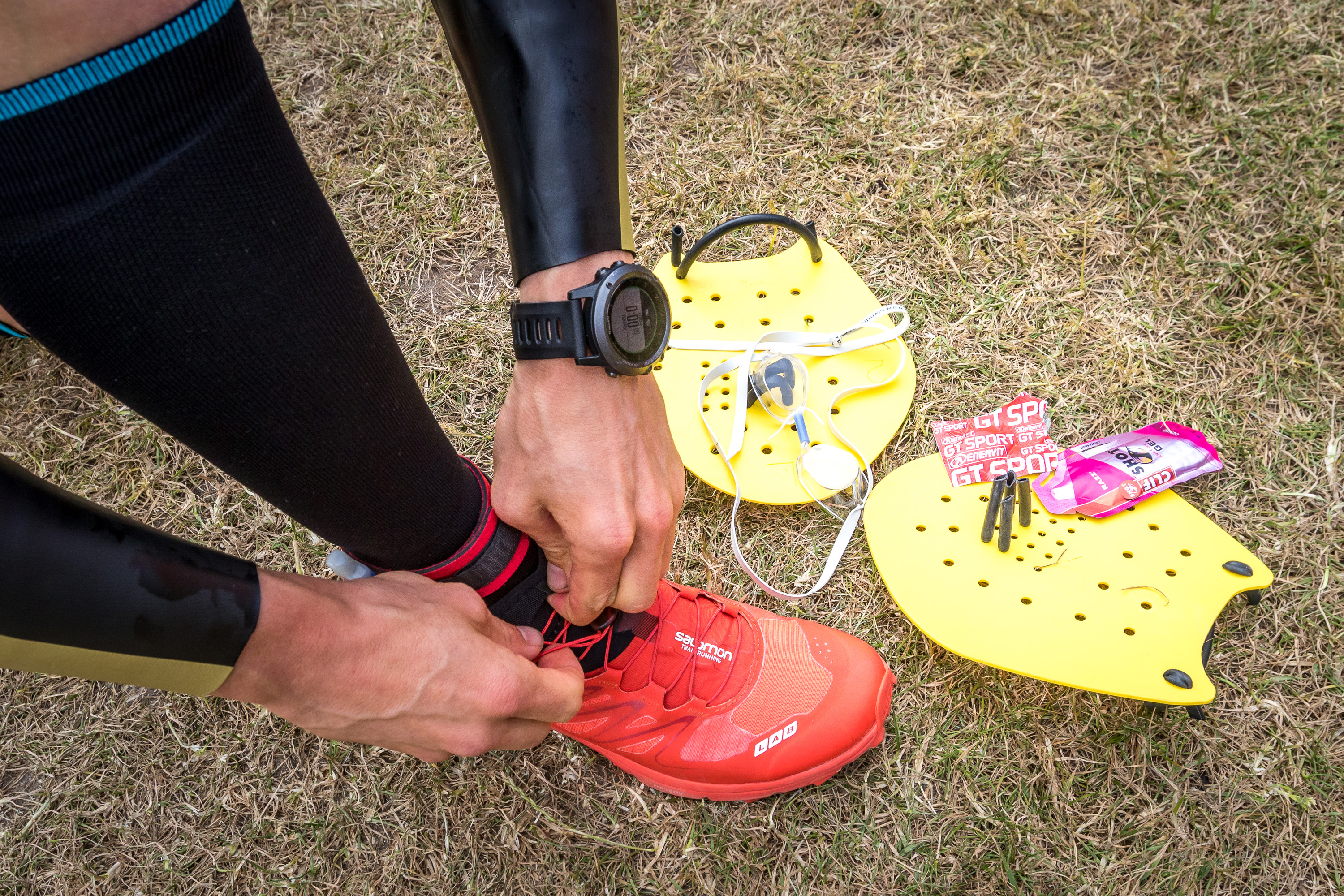
Alas, they don’t make trainers for swimming. But if they did, they’d have a good lace-up system to avoid them coming off, good drainage to ensure water escapes, be as light as possible – and have a grip that works on sand, wet rocks, grass and hard trails. Compression socks are a good idea to keep cramp at bay – along with gels and electrolytes. Thanks to the Swimrun app, a Garmin Fenix3 lets you accurately record the adventure and seamlessly switch between transitions.
9. Do it in pairs
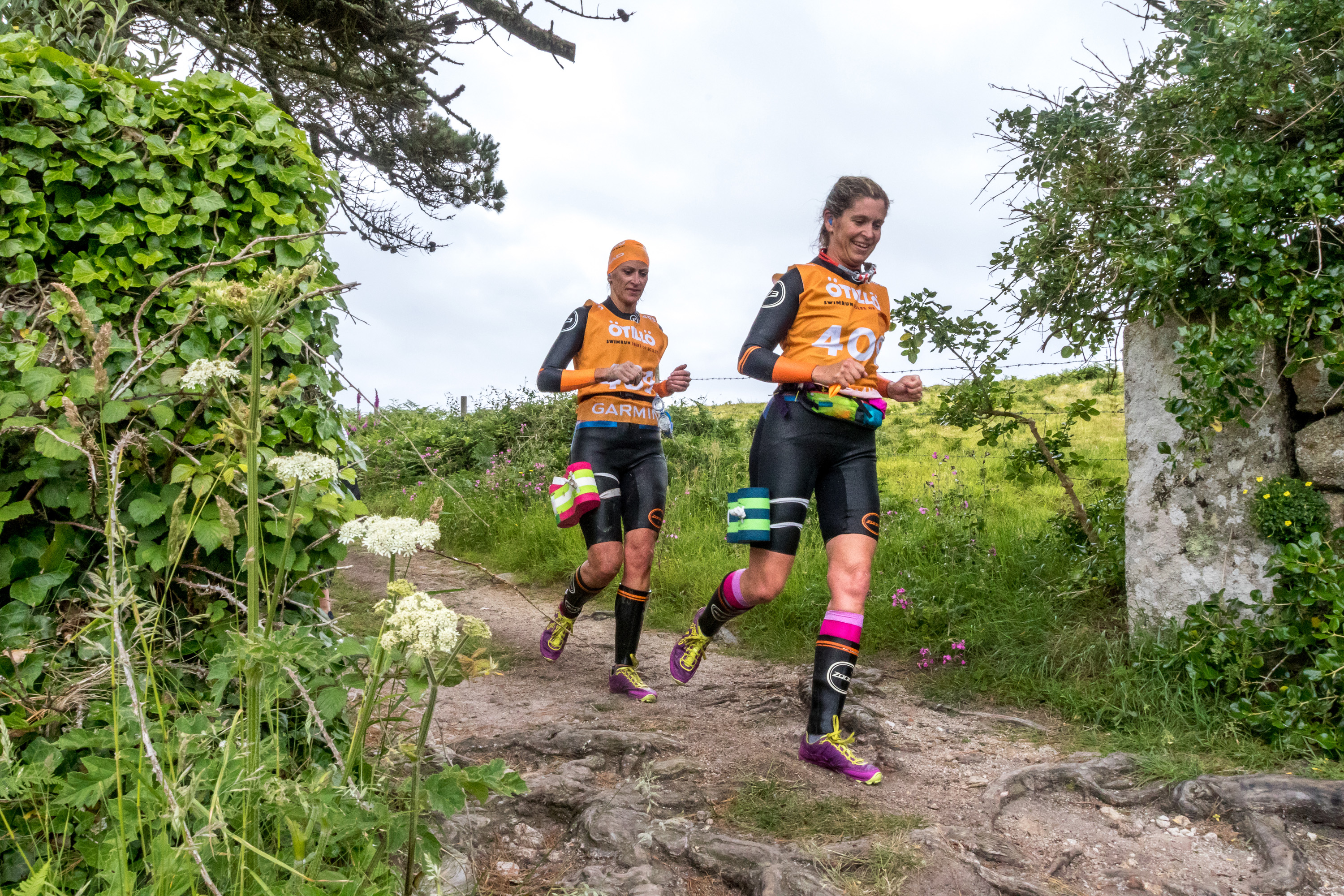
What distinguishes the ÖTILLÖ is its camaraderie, the feeling that you’re part of a family of adventure athletes who want to share the experience, and not self-driven athletes only interested in beating the clock. “It’s about caring for your partner,” Lemmel said, “it’s not about being the fastest.” Mine is my real-life partner Sarah Odell. Doing it with your girlfriend adds another dimension of interest to the race dynamic.
10. It’s an awesome adventure
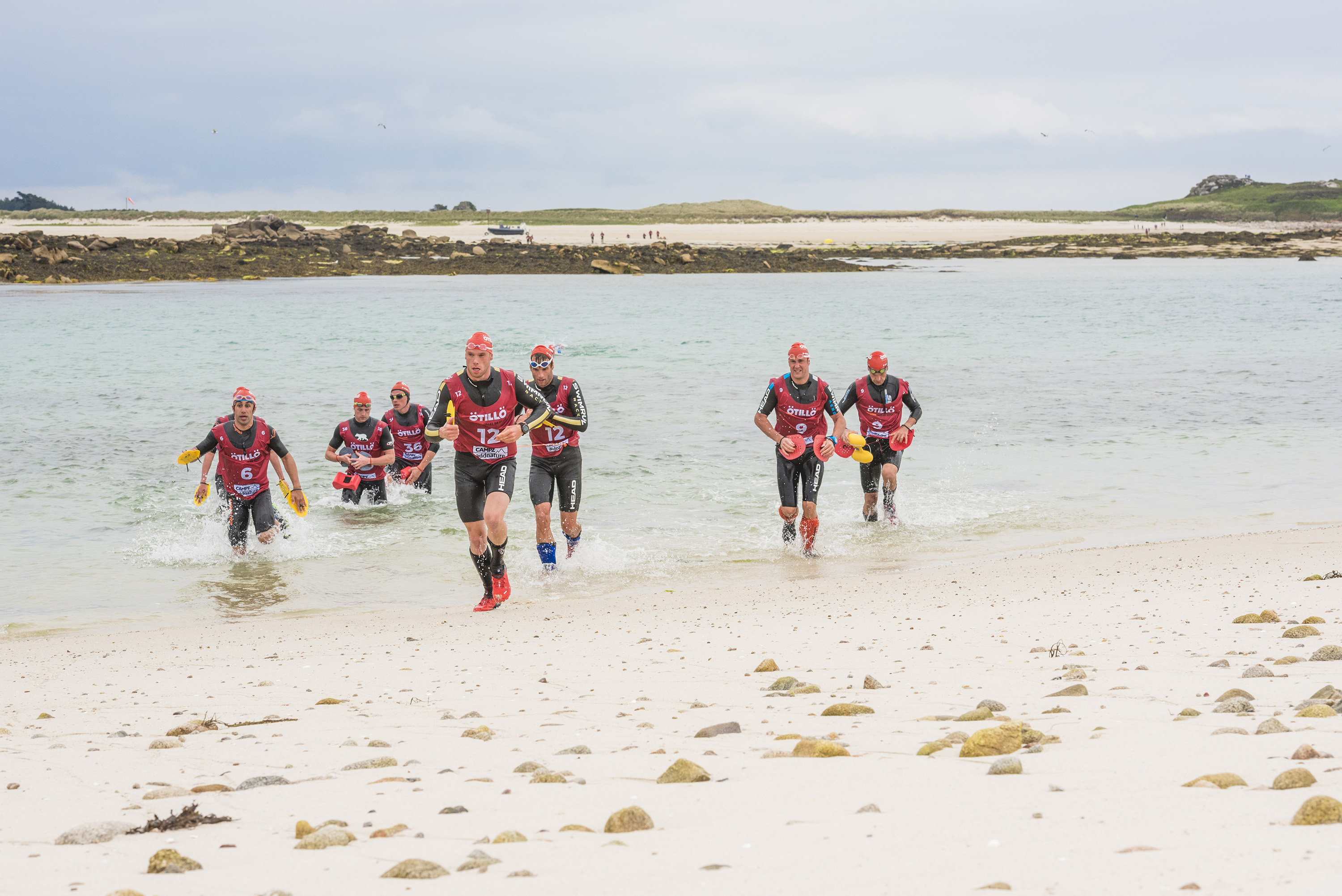
So to recap. Beautiful location, tick. Great vibes, tick. Interesting challenge, oh yes. And pretty high marks on the bragging rights scorecard. Yes, friends and relatives will be genuinely interested and intrigued by you taking part in this race. The only question that remains is how to enter. Fortunately there are now more and more races to choose from, with ÖTILLÖ events in Sweden, Germany, Switzerland and more venues planned. Head over to the website for more.To discover more about the Isles of Scilly, go to visitislesofscilly.com. To book your journey, visit islesofscilly-travel.co.uk.There are Skybus flights to St. Mary’s from selected UK airports. Prices start from £140 return from Land’s End. From spring to late-autumn, the Scillonian lll passenger ship sails up to seven days a week between Penzance and St. Mary’s. Prices start from £90 return. Tarquin stayed as a guest of Tregarthen’s Hotel, St. Mary’s.Feature Image © Matti Rapila Andersson/ ÖTILLÖ Isles of Scilly 16





Comments ()